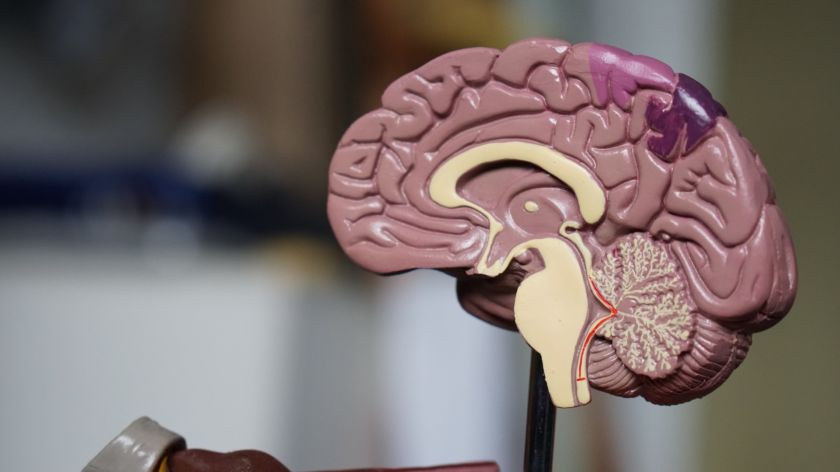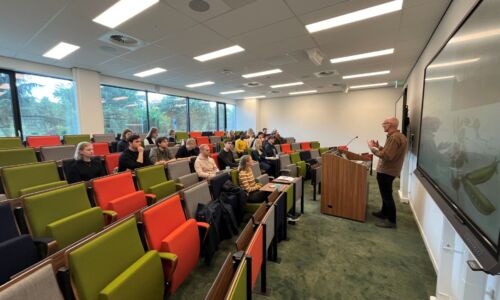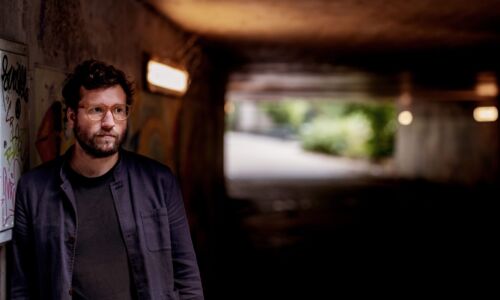Brain researchers want to improve communication between machines and the brain
-
 Image: Unsplash
Image: Unsplash
A large-scale neuroscientific research project, led by Radboud professor Francesco Battaglia, received a Gravitation grant worth 21,9 million euros earlier this month. The research focuses on the communication between machines and the brain. ‘If we can connect the brain of blind people to a video camera, we can hopefully restore their sight in the future.’
Being almost completely paralyzed and still be able to play videogames, type a text message and control drones. By having the brain communicate with machines, that is all possible nowadays. Such a connection between the brain and a machine, such as a computer, robotic arm, or drone, is called a brain-computer interface. ‘It is a way of getting information into or out of our brains without using our senses,’ neuroscientist Francesco Battaglia explains on the phone.
The technique is not only relevant for people who are paralyzed, but, for example, also for blind people. ‘Imagine something happening to the eyes of a patient, after which no signal goes to the brain anymore,’ Battaglia says. ‘You can then turn a video recording into electrical pulses that the brain can understand. That way you create an interface between a machine – the video camera – and the brain.’ The hope is that such interfaces can eventually restore blind people’s sight.
‘Communication with the brain is a two-way street’
Battaglia and his fellow researchers, from inside and outside Radboud University, want to use the Gravitation grant for the development of a new kind of interface over the next ten years. The new device must take more account of the complexity of the brain. ‘We shouldn’t see the brain as a computer to which you give input and from which you get output. Brain activity is a spontaneous, complex, and dynamic system. Communication with the brain is therefore a two-way street. You have to adjust the stimulation of the brain to what the brain is doing at that moment.’
Technical obstacles
No easy task, thinks Battaglia. ‘There are a lot of technological obstacles. First you have to find out in which part of the brain you have to be, and you have to be able to measure that activity in real time. Then you have to stimulate that part of the brain in the right way.’ It becomes even more difficult when you want to test this technique on laboratory animals walking around in a lab with a ‘natural setting’. Then you would need wireless equipment, says Battaglia, ‘but then you can see how the brain works under natural conditions.’

Such complex neuroscientific research is possible only if you take an interdisciplinary approach. Battaglia’s project brings together researchers from three disciplines: engineers for the technology, computer scientists to calculate what the brain is doing, and neuroscientists who underpin the whole research theoretically.
All major neuroscience institutes in the Netherlands are involved in the project. ‘That is desperately needed,’ says Battaglia, ‘because we are all working on different aspects of the brain. Some do research on vision, others on memory, others study social behaviour. We can all use the same technology, which is supplied by the technical universities.’
Memory
Within the project, Battaglia focuses specifically on memory. His goal is ambitious: by stimulating the brain during sleep, he wants to influence how memories are formed. ‘At night, your brain repeats the brain activity that was present during the day,’ he explains. ‘That repetition is important to reinforce memories and differentiate. You store important events for the long term, while you usually forget less important things.’
By intervening in the repetition process, Battaglia hopes to influence that selection. In the coming years, he and his colleagues are going to test the technique on lab animals. Using miniscule, wireless electrodes, they want to measure the brain activity of rats while they are walking through a large track and suddenly spot something delicious – something to eat or a bit of soy milk. ‘Next, we wait for them to fall asleep and try to locate the brain patterns of those finds. We can stimulate the brain to eliminate, suppress, or reinforce those patterns. And then we look at what happens: do they remember where they can find the food and soy milk?’
‘Maybe in the future we can change the memories of patients with PTSD’
At the moment, the research is purely fundamental in nature, but practical applications lay on the horizon. ‘If we are successful, we can use the technique in the future to change the memories of patients with post-traumatic stress disorder. Of we can create memory interfaces for patients with Alzheimer’s.’
Like many other practical applications of brain-computer interfaces, these treatments are not within reach just yet. There are two major obstacles, Battaglia explains. First of all, techniques used to stimulate the brain are often extremely invasive, which means approval to use them on people is a process that takes many years. Secondly, we know relatively little about how our brain receives and processes information. ‘That is why we first focus our research on animals, although we will also look the feasibility of human brain-computer interfaces. The idea is to give the field a big push in the right direction, so in five to ten years we have a clear roadmap towards a new generation of interfaces.’
Gravitation grant
In May, the Ministry of Education, Culture and Science awarded Gravitation grants to seven different research projects. The total amounts to 142,7 million euros. With the Gravitation programme, the government wants to stimulate interdisciplinary, innovative, and influential scientific research. The grants give researchers the opportunity to carry out a ten-year long research project together with researchers from other universities.
Translated by Jan Scholten.



